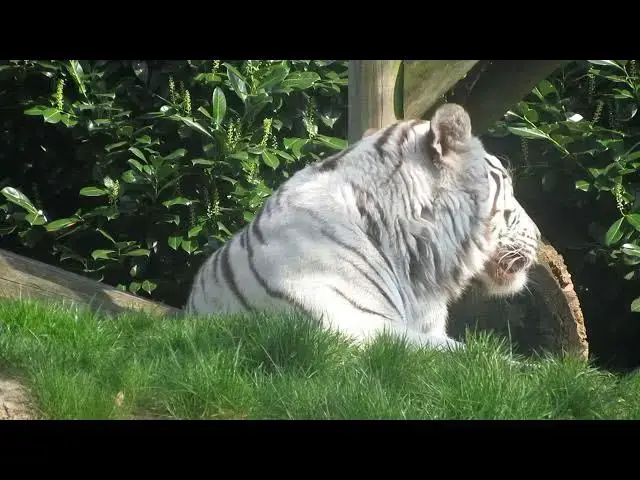0:00
Tigers key players in Forest
0:04
Tigers The Majestic big cats of Asia are
0:08
not just all inspiring
0:11
Predators they play a crucial role in
0:14
maintaining the health and balance of
0:18
ecosystems today we explore how these
0:21
striped felines contribute to Forest
0:24
restoration projects showcasing the
0:27
intricate connections between wildlife
0:31
conservation Forest restoration projects
0:34
aim to revitalize degraded or destroyed
0:39
ecosystems these initiatives involve
0:42
replanting trees reintroducing native
0:45
species and creating conditions that
0:48
allow forests to recover and
0:51
Thrive but how do tigers fit into this
0:54
picture as apex predators Tigers sit at
0:58
the top of the food chain
1:00
their presence in a forest creates a
1:03
cascading effect known as a trophic
1:07
Cascade by controlling the populations
1:10
of herbivores like deer and wild boar
1:15
grazing this allows young trees and
1:17
vegetation to grow promoting Forest
1:21
regeneration Tigers require large
1:24
territories to survive often spanning
1:28
kilometers when cons cons a efforts
1:30
focus on protecting tiger habitats they
1:33
inadvertently Safeguard vast stretches
1:37
forest this protection extends to
1:40
countless other species that share the
1:42
same ecosystem from small insects to
1:47
mammals the presence of tigers also
1:49
attracts ecotourism which can provide
1:52
economic incentives for local
1:54
communities to support Forest
1:57
conservation when people have a vested
1:59
interest interest in maintaining healthy
2:01
tiger populations they are more likely
2:04
to engage in sustainable practices and
2:06
support reforestation
2:08
efforts Tigers help maintain
2:14
forests their hunting Behavior creates a
2:17
mosaic of different habitats within the
2:20
forest as prey species adapt their
2:26
predation this diversity of
2:28
microhabitats supports a wider range of
2:31
plant and animal species contributing to
2:34
a more resilient forest
2:37
ecosystem however integrating tigers
2:40
into Forest restoration projects is not
2:44
challenges human tiger conflict can
2:47
arise when tiger habitats overlap with
2:51
settlements careful planning and
2:53
Community engagement are essential to
2:55
mitigate these risks and ensure the
2:58
success of both tiger conservation and
3:02
efforts Tigers also require large
3:06
connected Forest areas to maintain
3:08
genetic diversity and allow for
3:12
growth this necessitates landscape level
3:16
conservation approaches often Crossing
3:19
political boundaries and requiring
3:22
cooperation between different regions or
3:25
countries the benefits Tigers bring to
3:28
Forest restoration extend far beyond the
3:32
ecosystem healthy forests act as carbon
3:36
sinks helping to mitigate climate
3:39
change they also regulate water cycles
3:42
prevent soil erosion and provide
3:45
numerous resources for human
3:47
communities by recognizing the vital
3:50
role Tigers play in forest ecosystems we
3:53
can develop more holistic and effective
3:58
restoration conservation efforts that
4:01
protect Tigers and their habitats not
4:03
only ensure the survival of these
4:05
magnificent creatures but also
4:07
contribute to the health and resilience
4:12
ecosystems as we continue to face Global
4:15
Environmental challenges the tiger
4:18
stands as a powerful symbol of the
4:20
interconnectedness of all living things
4:22
and the importance of preserving
4:24
biodiversity for the benefit of our

